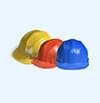-
 Cutting Pliers 1 x 80.00
Cutting Pliers 1 x 80.00 -
 Safety Helmet 1 x $120.00
Safety Helmet 1 x $120.00 -
 Jack Hammer Drill 1 x $230.00
Jack Hammer Drill 1 x $230.00
Falling Film Circulation Evaporator
In Falling film evaporators, the effluent after ETP (or) RO usually enters the evaporator at the head of the evaporator. In the head, the product is evenly distributed into the heating tubes.
The effluent enters the heating tube and forms a thin film on the tube wall where it flows downwards at boiling temperature and is partially evaporated. In most cases, steam is used for heating the evaporator. The product and the vapor both flow downwards in a parallel flow. This gravity-induced downward movement is increasingly augmented by the co-current vapor flow. The heat transfer takes place in calandria and reach a temperature, passed to the vapor separator and vapor will be separated to another effect or condenser. The separation of the vapor from effluent continuous process effluent will become high concentrated, than transfer to ATFD for solid output. vapor become condensation and out as permit with low conductivity.
Key points about Forced Circulation Evaporators (PII FC Evaporators) and their application:
- Depend upon the capacity of water to be evaporated the no of effect can be increase. Falling film circulation evaporator will be design for maximum 5 effect. .
- The entire pump used in evaporator is centrifugal with double mechanical seal.
- Falling film circulation system is operated by the vacuum base, due to this evaporation done in below boiling point of water and for smooth running of plant
- PII Evaporator process equipment involved: Calandria, Vapour separator, condenser, condensate vessel and feed tank
- PII Can design of evaporator with thermic fluid, steam, hot water. Other major utilities involved is cooling water, power
- PII Manufacturing range: 5 KLPD to 2 MLD
- PII can manufacturer evaporator with below MOC. MOC selection majorly depends up on the salt present in the effluent.
- a )SS316
- b) SS304
- c) Duplex
- d) Super duplex
- e) Titanium
- PII can also manufacturer the Evaporator in other MOC also or combination of above given MOC.

